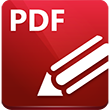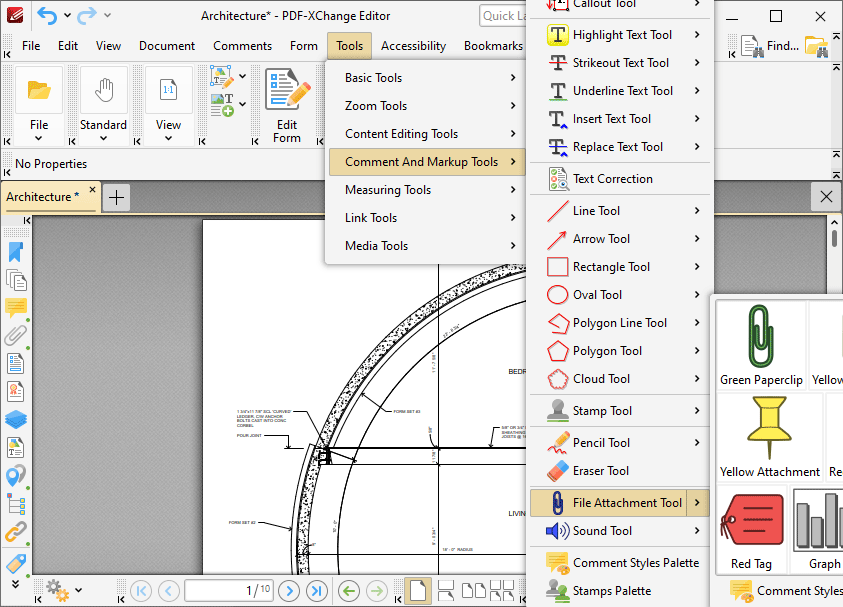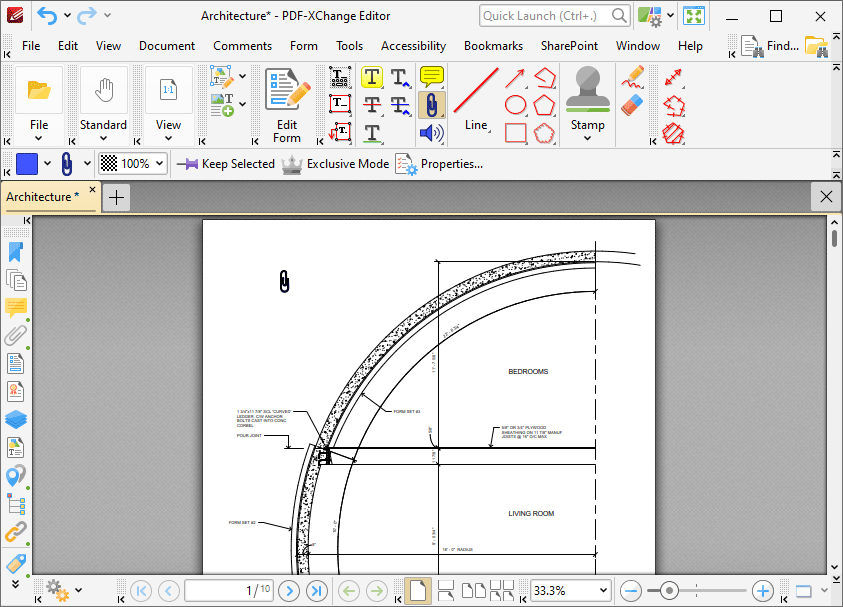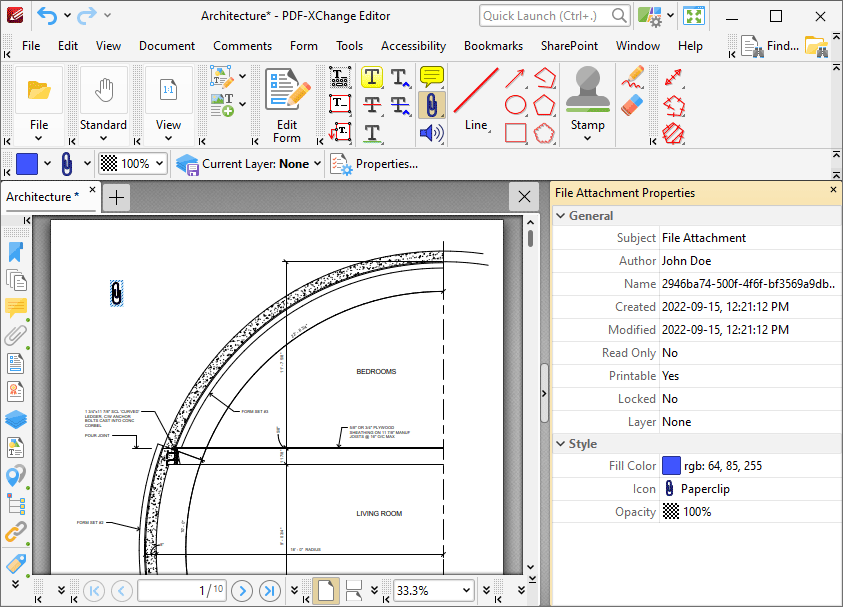 File Attachment Tool
File Attachment Tool
Click File Attachment Tool to embed files into documents and insert an icon that links to the embedded content:

Figure 1. Tools Tab Submenu, File Attachment Tool
When the File Attachment Tool is selected, the pointer is replaced with a crosshairs icon. Move the crosshairs to the desired location and click to create the link. The Open Files dialog box will open. Select the desired file and click Open. The link to the embedded file will then appear in the document:

Figure 2. File Attachment Tool Example
•Click and drag the file attachment icon to reposition it. Alternatively, the arrow keys can be used for this purpose. Hold down Shift to move at an increased increment when using the arrow keys.
•Double-click the file attachment icon to open the attached file.
•Right-click file attachment icons for further options. See here for an explanation of these options.
•When the File Attachment Tool is selected, the following options are enabled in the Properties Toolbar:
•Fill Color determines the file attachment icon color.
•Icon determines the file attachment icon used for the tool.
•Opacity determines the level of transparency in the file attachment icon.
•Keep Selected determines whether or not the File Attachment Tool remains selected after a file attachment is created. If this option is enabled then the tool will remain selected and can be used to create several file attachments consecutively. If this option is not enabled then PDF-XChange Editor will revert to the designated default tool immediately after creating a file attachment.
•Exclusive Mode simplifies the process of using the File Attachment Tool. When Exclusive Mode is enabled, the pointer ignores all interactive elements of documents other than base content. This makes it possible to create file attachments on areas that overlap with other content without the risk of accidentally selecting undesired items. When Exclusive Mode is disabled, the pointer recognizes and interacts with all underlying elements in the usual manner.
•Click Properties to view/edit additional file attachment annotation properties, as detailed below.
•Note that several default styles are available for file attachment icons, as detailed in (figure 1). Click to select alternative annotation styles. The Comment Styles Palette can be used to save customized file attachment icon styles for subsequent use. Right-click the File Attachment icon in the Comment Toolbar to view existing styles and/or access the Comment Styles Palette.
•The Commenting section of the Preferences dialog box can be used to view/edit preferences for comments.
File Attachment Properties Pane

Figure 3. File Attachment Properties Pane
•Subject is the name of the file attachment comment, as referenced in the Comments pane.
•Author is the name of the user that created the file attachment comment.
•Name is the unique name of the file attachment comment, as referenced within the application.
•Created is the date and time at which the file attachment comment was created.
•Modified is the date and time at which the file attachment comment was last modified.
•Read Only is the read only status of the file attachment comment. If this property is enabled then users cannot interact with the comment. Please note that it is necessary to use JavaScript to change the value of this property.
•Printable is the print status of the file attachment comment. If this property is enabled then the comment is printed with the document. If this property is not enabled then the comment is not printed.
•Locked is the locked status of the file attachment comment. If this property is enabled then the comment cannot be deleted and its properties (including its position and size) cannot be modified by users.
•Layer specifies the optional content layer to which the file attachment comment belongs. Further information about layers is available here.
•Fill Color determines the color of the file attachment comment.
•Icon determines the icon used for the file attachment comment.
•Opacity determines the level of transparency in the file attachment comment.